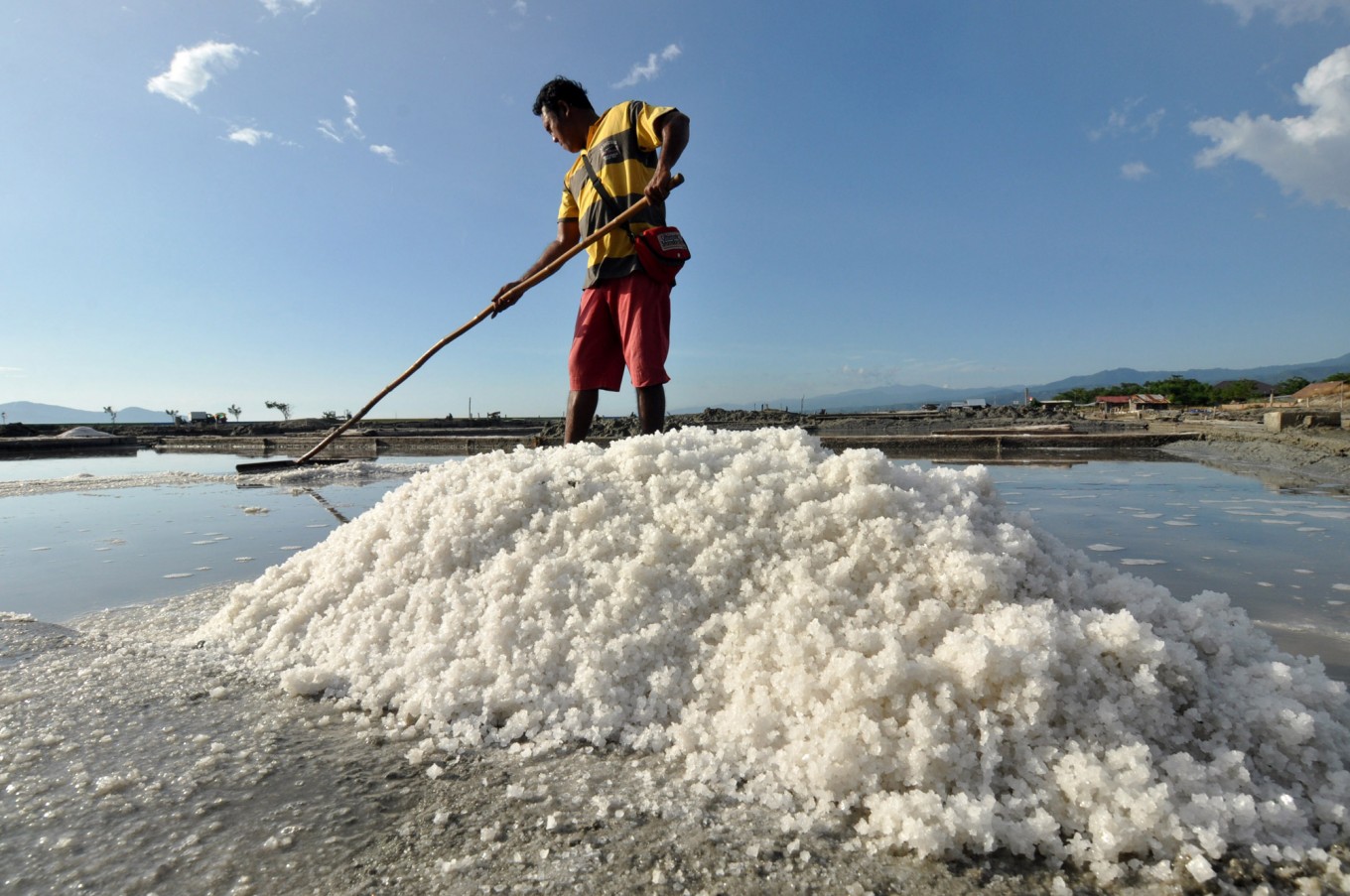Popular Reads
Top Results
Can't find what you're looking for?
View all search resultsPopular Reads
Top Results
Can't find what you're looking for?
View all search resultsState salt firm to build Rp 1.8t salt factory in NTT
Change text size
Gift Premium Articles
to Anyone
S
tate-owned salt company PT Garam has expressed its agreement to develop a salt factory using technology invented by the Agency for the Assessment and Application of Technology (BPPT) to produce about 500,000 tons of salt per year.
The company needs Rp 1.8 trillion (US$134.89 million) in funds to develop the factory.
“PT Garam has expressed its readiness [to develop the factory]. They say they will seek a bank loan,” said BPPT head Unggul Priyanto in Jakarta on Wednesday, as reported by tempo.co.
Previously, Coordinating Maritime Affairs Minister Luhut Pandjaitan said the government would develop salt fields and factories on 5,000 hectares of idle land in East Nusa Tenggara (NTT) to address the scarcity of the commodity.
According to the BPPT, NTT, West Nusa Tenggara and South Sulawesi were ideal places to introduce the technology, because they offered large stretches of land and experienced low rainfall.
Previously, PT Garam president director said his company was managing salt fields on 400 ha of land in Bipolo village, Kupang regency, since 2016. He said his company would be ready to manage another 3,800 ha of land in NTT for salt factories.
Meanwhile, the head of the National Land Agency’s office in NTT, Josias Benyamin Lola, said all of the 22 regencies in the province had great potential to develop salt fields.
Unggul explained that the BPPT would offer its technology, which shakes up seawater to increase salt levels before it flows into reservoirs, where drying facilities are located. (bbn)










